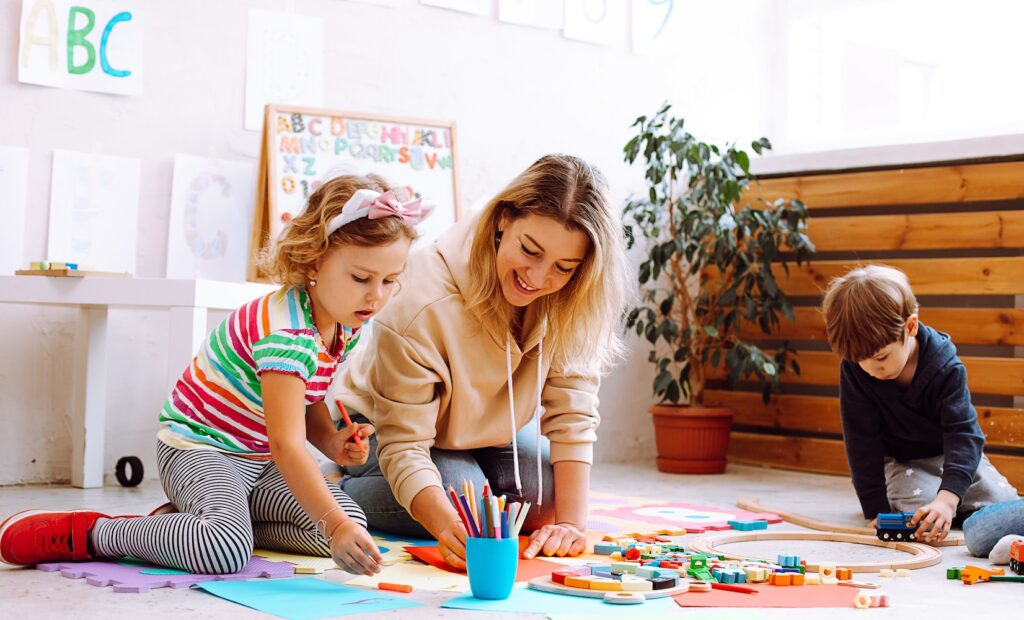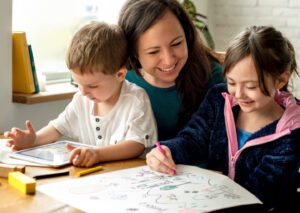More parents seeking better methods for ‘neurodivergent learners,’ but homeschoolers have deployed these strategies for years
Yale professor Christina Cipriano is calling for educational alternatives, after seeing how public schools failed her daughter even after she obtained an Individual Education Plan…

Yale professor Christina Cipriano is calling for educational alternatives, after seeing how public schools failed her daughter even after she obtained an Individual Education Plan (IEP).
“Neurodivergent students do not need to learn how to learn differently to have the chance to succeed in our nation’s public schools,” the Ph.D. and director of the Education Collaboratory at Yale wrote for EdSurge, a left-of-center educational magazine. “Our nation’s public schools need to learn how to educate differently so all students have the opportunity to succeed.”
However, many of the changes Cipriano advocates have already circulated for years within the homeschool community.
Indeed, homeschool families succeeded in helping neurodivergent children long before the COVID-19 pandemic highlighted learning shortfalls in public schools.
‘Good learning’ assumptions can hinder students
Cipriano’s experience with the public-school system became personal in the fall of 2020, when her daughter entered kindergarten at the height of remote instruction.
“Like her peers nationwide, her transition to first grade in the fall of 2021 was a challenging one,” she writes. “Although she was performing at grade level academically, she experienced increasing challenges with her attention, organization, peer interactions and behaviors at school.”
Part of the problem stemmed from traditional classrooms forcing children to behave in ways that didn’t always encourage learning, Cipriano found.
“The picture of what ‘good learning’ looks like in classrooms has a long legacy of upholding ableist, neuronormative patterns of behavior,” she explains. “Sitting in a chair, still, with both feet down on the floor, looking forward, and not fidgeting, does not equate to how much a student is learning. Neither does finishing all the problems in a designated time frame or being able to fit your thinking into a little box at the bottom of a worksheet or exam.”
This doesn’t come as news to homeschool students, who studies show demonstrate how to achieve more learning in fewer hours than their public-school counterparts.
“Because the homeschool students demonstrated significantly more learning behavior during instruction, it was unsurprising that they made more academic gains than the public-school students,” writes Stephen Duvall, Ph.D., for the Home School Legal Defense Association (HSLDA).
“In as little as 2 hours, homeschoolers can engage in the same amount of strategic learning behavior as public-school students experience in an entire school day.”
For example, one study observed 100 randomly selected 4th-grade students and how long they engaged in learning behaviors such as reading, writing and talking about the subject matter.
“Out of a 400-minute day, the public schools in the study set aside 250 minutes for academic instruction, during which the students manifested the important learning behaviors for only 67.5 minutes, or about 16 minutes per hour,” Duvall writes. “Undoubtedly, this represented a very inefficient use of classroom time.”
Public-school methods ‘increasingly irrelevant’
In all fairness to public schools, however, typical classrooms function more like crowd-control systems rather than optimal learning environments.
John Taylor Gatto, a longtime schoolteacher who called out many of the flaws in the current U.S. educational system, argued its overall design is to produce a mass population “whose behavior can be predicted and controlled.”
“I’ve noticed a fascinating phenomenon in my 25 years of teaching – that schools and schooling are increasingly irrelevant to the great enterprises of the planet,” he once said. “No one believes anymore that scientists are trained in science classes or politicians in civics classes or poets in English classes. The truth is that schools don’t really teach anything except how to obey orders.”
Cipriano uncovered this mindset when attending her daughter’s annual IEP meeting this school year, with her daughter now in 3rd grade.
“Her teacher said something to me from across the table that made me stop in my tracks: ‘Your daughter is taking instructional time away from the other students in my class,’” Cipriano recalls. “As an educator, I was embarrassed on behalf of the teacher for making such an ableist statement in an IEP meeting, and, as a parent of a neurodivergent child, I was enraged.”
Two other officials made light of Cipriano’s concerns on behalf of her child.
“During follow-up meetings, one administrator dismissed my concerns and said he saw nothing wrong with my daughter’s treatment. Another administrator asked me what I wanted them to do – did I want the school to manipulate her environment? Then she said I know too much because of the work I do.”
Given such attitudes, it’s no surprise public schools have difficulty keeping qualified teachers – especially in special education.
“This past summer, a Pew Research Center report revealed that the number of students in the American special education system has doubled over the past four decades,” Amy Mackin writes in another left-of-center magazine, ChalkBeat.
“Schools are struggling to find enough special educators to serve this increasing population, especially amid the rise in mental health challenges among students, including those with disabilities.”
Mackin experienced this firsthand, withdrawing her son from public school when she found it couldn’t meet his specific needs.
“Thirteen years ago, my neurodivergent child’s experience with public special education led us to leave it altogether and homeschool from grades 6-12,” she writes.
“I created a customized education program for my son, incorporating his ideas and interests. I connected with educators who operated enrichment centers offering homeschool classes in the morning and after-school programs later in the day, as well as community college staff, local museum educators, retired teachers, homeschool groups, and university professors who offered additional opportunities for alternative learning.”
‘Specific strategies’ to optimize each student’s education
Cipriano also noted how learning doesn’t have to mean staring at a teacher or whiteboard while sitting still.
“Our daughter doesn’t always make eye contact when she’s absorbing information,” she notes. “And sometimes she likes to sit in a chair, but other times she likes to move around. For her, ‘good learning’ might look like manipulating a ‘Pop it!’ toy while chewing on a crunchy snack, or coloring a picture while standing up and leaning on her desk with her hood up.”
Again, homeschooling can look very much like this scenario in the early elementary years. The out-of-the-box learning continues as older students often delve into real-life skills such as beekeeping, scuba diving and welding.
“Like many neurodivergent learners, having specific strategies that provide sensory input isn’t distracting her – it’s centering her to optimize her learning,” Cipriano explains, adding these strategies help her daughter thrive outside the classroom.
“Our daughter has been working hard to learn to recognize her needs and use these strategies and many more to share her gifts with the world. Her multitasking superpowers, her compassion, her resourcefulness and her creative problem-solving are all traits that will serve her well in life.”
Mackin echoes Cipriano’s perspective when recounting her son’s customized homeschool program.
“We spent Monday mornings at an enrichment center where an MIT professor taught home-schoolers biology and anatomy. Thursday afternoons, we headed to a community gym, where my son studied Latin with a professor of Greek and Roman mythology, played chess, and then joined a group exercise class – all for a small fee. We learned about birds of prey at our local Audubon Society, and we discussed farming history during a visit to a cranberry bog.”
For both Mackin and Cipriano, meaningful change for their children came first from parents, not public schools.
“If we keep providing all students with the same ‘this is the way we do things’ approach to education, neurodivergent students will continue to experience diminished academic achievement, increased punitive disciplinary practices and exclusionary placements,” Cipriano argues.
As homeschoolers have long demonstrated, the same neurodivergent learners who suffered in public school can thrive under parent-led educational alternatives.
Public schools increasingly are being challenged to admit their failures and begin making long-term, institutional changes in their classrooms to benefit all students.
But the pace of such change is likely to be much slower than the innovation in the homeschooling arena.



